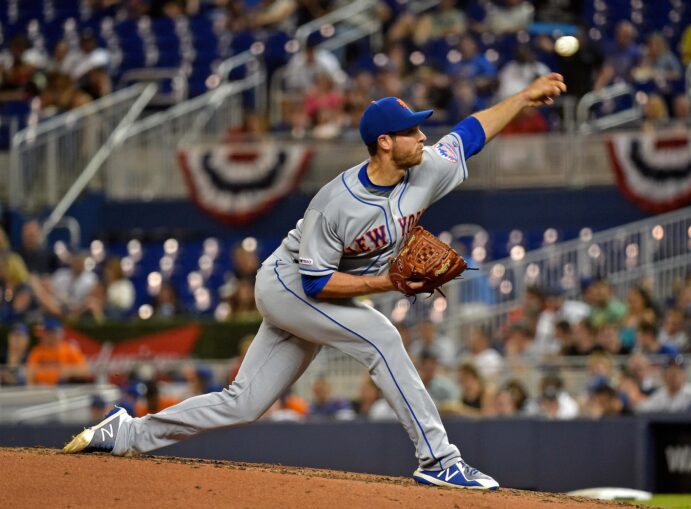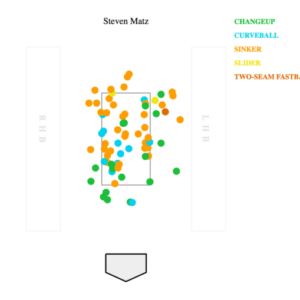
Steven Matz has come into this season with lower expectations than in the past. Usually he’s seen as a number two or three but now he’s a fourth starter. Hopefully this takes some pressure of Matz and allows him to become one of the better fourth starters in baseball.
In the first, Matz struck out Miguel Rojas but a Wilson Ramos passed ball allowed him to reach first. He almost got out of it but a two-run homer from Starlin Castro on a 2-2, curveball put the Mets in an early deficit.
Matz to his credit kept the Marlins quiet until the fifth inning where he had to work around a Jeff McNeil error in left field. Matz proceeded to get a fly-out and struck out Peter O’Brien to help him get out of the jam.
The sixth is when the wheels started loosening for Matz. He gave up a single to Rojas, but got a potential double play ball from the next hitter though third baseman J.D. Davis eliminated that chance (and almost got Robinson Cano taken out) when he threw a lollipop to second.
Then Brian Anderson singled and for some reason Rosell Herrera decided to test the arm of Juan Lagares by going first to third. It was a strong one-hop throw by Lagares, but Davis muffed it. Matz stayed in to face Starlin Castro who got a single to give the Marlins a brief 3-2 lead.
Matz did not get much help from his defense in this one. His line would have looked much better had it not been for some of the miscues. Despite that, he managed a low pitch count and was pulled with just 74. He allowed only one earned run in 5.1 innings while striking out three and walking none.
Matz did a good job of keeping the ball in to righties while going outside to mix things up. The thing that Matz should work on is keeping his breaking balls lower in the zone.

As you can see from this image, Matz had quite a few breaking pitches in the upper-half of the zone which makes him more susceptible. In 2018, Matz pitched up in the zone roughly 51% of the time. Matz’s expected weighted on-base average when up the in the zone was significantly worse than when he kept it low.
This struggle from pitching up in the zone resonates from the lack of movement he receives as opposed to other pitchers. His fastball spin rate is one of the lowest in the majors and his curveball was also below average in generating spin. Players can live with a low spin rate but it is difficult to live upstairs with a spin rate like Matz’s.
A positive from Matz’s start was that his velocity was getting stronger as the game progressed. was averaging close to 92 MPH early in the game but it was in the 93-94 range during the fourth inning and on. Another positive was Matz having consistent release point. Matz has shown a tendency to forecast his breaking pitch so him being able to prevent the Marlins from being able to forecast when it was coming is a huge bonus for him.
Matz will get the Nationals in his next start at Citi Field. The Nationals have some very talented righties in their lineup so Matz should have a good test in that one.















